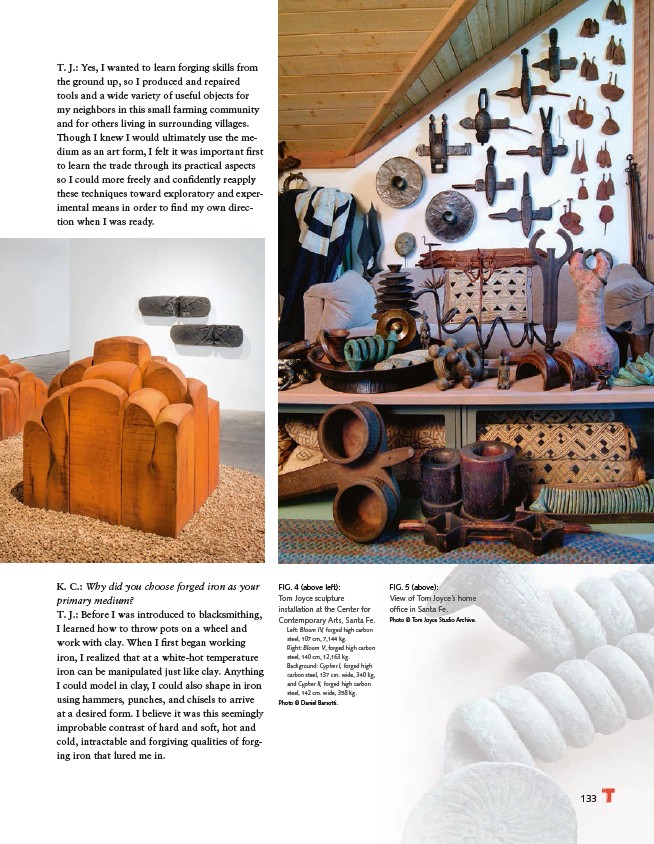
133
T. J.: Yes, I wanted to learn forging skills from
the ground up, so I produced and repaired
tools and a wide variety of useful objects for
my neighbors in this small farming community
and for others living in surrounding villages.
Though I knew I would ultimately use the medium
as an art form, I felt it was important fi rst
to learn the trade through its practical aspects
so I could more freely and confi dently reapply
these techniques toward exploratory and experimental
means in order to fi nd my own direction
when I was ready.
K. C.: Why did you choose forged iron as your
primary medium?
T. J.: Before I was introduced to blacksmithing,
I learned how to throw pots on a wheel and
work with clay. When I fi rst began working
iron, I realized that at a white-hot temperature
iron can be manipulated just like clay. Anything
I could model in clay, I could also shape in iron
using hammers, punches, and chisels to arrive
at a desired form. I believe it was this seemingly
improbable contrast of hard and soft, hot and
cold, intractable and forgiving qualities of forging
iron that lured me in.
FIG. 4 (above left):
Tom Joyce sculpture
installation at the Center for
Contemporary Arts, Santa Fe.
Left: Bloom IV, forged high carbon
steel, 107 cm, 7,144 kg.
Right: Bloom V, forged high carbon
steel, 140 cm, 12,163 kg.
Background: Cypher I, forged high
carbon steel, 137 cm. wide, 340 kg,
and Cypher II, forged high carbon
steel, 142 cm. wide, 358 kg.
Photo © Daniel Barsotti.
FIG. 5 (above):
View of Tom Joyce’s home
offi ce in Santa Fe.
Photo © Tom Joyce Studio Archive.